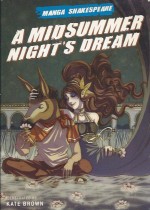
By Joe Kubert with Burne Hogarth (Dark Horse Comics)
ISBN: 978-1-59307-404-3
Soon after first publication in 1912 Tarzan of the Apes became a multi-media sensation and global star. More novels and many movies followed; a comic strip arrived in 1929, followed by a radio show in 1932 and the Ape-Man inevitably carved out a solid slice of the comicbook market too once the industry was firmly established.
Western Publishing were a big publishing and printing outfit based on America’s West Coast, rivalling DC and Marvel at the height of their powers. They specialised in licensed properties and the jewels in their crown were all the comics starring the Walt Disney and Warner Brothers cartoon characters.
The publishers famously never capitulated to the wave of anti-comics hysteria that resulted in the crippling self-censorship of the 1950s. Dell Comics – and latter imprints Gold Key and Whitman – never displayed a Comics Code Authority symbol on their covers. They never needed to…
Dell also sought out other properties like movie or newspaper strip franchises, and would become inextricably associated with TV adaptations once the small screen monopolised modern homes.
In 1948 Dell produced the first all-new Tarzan comicbook. The newspaper strip had previously provided plenty of material for expurgated reprint editions until Dell Four Color Comic #134 (February 1947).
This milestone featured a lengthy, captivating tale of the Ape-Man scripted by Robert P Thompson – who wrote both the Tarzan radio show and aforementioned syndicated strip – with art by the legendary Jesse Marsh.
Marsh & Thompson’s Tarzan returned with two further tales in Dell Four Color Comic #161, cover-dated August 1947. This was a frankly remarkable feat: Four Colour was a catch-all umbrella title that featured literally hundreds of different licensed properties – often as many as ten separate issues per month – so such a rapid return meant pretty solid sales figures.
Within six months the bimonthly Tarzan #1 was released (January/February 1948), beginning an unbroken run that only ended in 1977, albeit by a convoluted route…
After decades as Whitman staples, licensing of Edgar Rice Burroughs properties was transferred to DC – not just Tarzan and his extended family, but also fantasy pioneers John Carter of Mars, Carson of Venus, Pellucidar and others – with the new company continuing the original numbering.
Tarzan #207 had an April 1972 cover-date and the series carried on until February 1977 and issue #258. From then on Marvel, Malibu and Dark Horse extended the jungle Lord’s comicbook canon…
The early 1970s were the last real glory days of National/DC Comics. As they slowly lost market-share to Marvel, they responded by producing controversial and landmark superhero material, but their greatest strength lay – as it always had – in the variety and quality of its genre divisions.
Mystery and Supernatural, Romance, War and Kids’ titles remained strong or even thrived and the company’s eye for a strong brand was as keen as ever.
Tarzan had been a mainstay of Dell/Gold Key, and a global multi-media phenomenon, so when DC acquired rights they justifiably trumpeted it out, putting one of their top creators in sole charge of the legendary Ape-Man’s monthly exploits, as well as generating a boutique bunch of ERB titles in a variety of formats.
The DC incarnation premiered in a blaze of publicity at the height of a nostalgia boom and was generally well received by fans. For many of us, those years provided the definitive graphic Tarzan, thanks solely to the efforts of the Editor, publisher and illustrator who shepherded the Ape-man through the transition. They were all the same guy: Joe Kubert.
Kubert was born in 1926 in rural Southeast Poland (which became Ukraine and might be Outer Russia by the time you read this). At age two his parents took him to America and he grew up in Brooklyn. According to his Introduction his earliest memory of cartooning was Hal Foster’s Tarzan Sunday strips…
Joe’s folks encouraged him to draw from an early age and the precocious kid began a glittering career at the start of the Golden Age, before he was even a teenager. Working and learning at the Chesler comics packaging “Shopâ€, MLJ, Holyoke and assorted other outfits, he began his close association with National/DC in 1943. A canny survivor of the Great Depression he also maintained outside contacts, dividing his time and energies between Fiction House, Avon, Harvey and All-American Comics, where he particularly distinguished himself on The Flash and Hawkman.
In the early 1950s he and old school chum Norman Maurer were the creative force behind publishers St. Johns: creating evergreen caveman Tor and launching the 3D comics craze with Three Dimension Comics.
Joe never stopped freelancing, appearing in EC’s Two-Fisted Tales, Avon’s Strange Worlds, Lev Gleason Publications & Atlas Comics until in 1955 when, with the industry imploding, he took a permanent position at DC, only slightly diluted whilst he illustrated the contentious and controversial newspaper strip Tales of the Green Berets from 1965 to 1968. From then on he split his time drawing Sgt. Rock and other features, designing covers and editing DC’s line of war comicbooks.
And then DC acquired Tarzan…
This first fabulous hardcover archive (also available in digital formats) collects the lead stories from Tarzan #207-214 (April-November 1972); a tour de force of passion transubstantiated into stunning comic art, with Kubert writing, illustrating and lettering. Moreover, the vibrant colours in this epic re-presentation is based on Tatjana Wood’s original guides, offering readers a superbly authentic and immersive experience whether you’re coming fresh to the material or joyously revisiting a beloved lost time.
The only disconcerting things about this stellar compilation are the cover reproductions, which appear in all their iconic glory but manipulated to remove DC’s trademark logos. The mightiest force in the modern jungle is still Intellectual Property lawyers…
The tense suspense begins with an adaptation of first novel Tarzan of the Apes and opens with a safari deep in the jungle. A pretty rich girl is driving her white guide and native bearers at a ferocious pace as she desperately hunts for her missing father.
When a bronzed god bursts into view battling a panther, she watches aghast as human impossibly triumphs over killer cat and then beats his chest whilst emitting an astounding scream. As the terrifying figure vanishes back into the green hell the girl’s questions are grudgingly answered by the old hunter who relates a legend he has heard…
‘Origin of Tarzan of the Apes’ depicts how, following a shipboard mutiny, John Clayton, Lord Greystoke and his wife Lady Alice are marooned on the African coast with all their possessions, including the vast library of books and Primers intended for their soon to be born baby…
Against appalling odds they persevered, with Greystoke building a fortified cabin to shelter them from marauding beasts, especially the curious and savage apes which roam the region. Despite the birth of a son, eventually the jungle won and the humans perished, but their son was saved by a grieving she-ape who adopted the baby to replace her own recently killed “Baluâ€â€¦
The ugly, hairless boy thrived under Kala‘s doting attentions, growing strong but increasingly aware that he was intrinsically different. He only discovered the how and why after years of diligent effort: through sheer intellectual effort and the remnants of his father’s books and papers, Tarzan learned to read and deduced that he was a M-A-N…
The tale within a tale continues in ‘A Son’s Vengeance: Origin of the Ape-Man Book 2’ as the boy rises to prominence amongst his hirsute tribe and through imagination and invention masters all the beasts of his savage environment. Eventually a brutal, nomadic tribe of natives settle in the area and Tarzan has his first contact with creatures he correctly identifies as being M-E-N like him…
The new situation leads to the greatest tragedy of his life as a hunter of M’Bonga’s tribe kills beloved, devoted Kala and Tarzan learns the shock of loss and overpowering hunger for revenge…
Issue #209 revealed how civilisation finally caught up with Tarzan as ‘A Mate For the Ape-Man: Origin of the Ape-Man Book 3’ saw him meet and save American Jane Porter, her elderly father and his own cousin.
Just as had happened years earlier, these unlucky voyagers were marooned by mutineers. Discovering John Clayton’s cabin, the castaways find the lost peer’s diary, which is of especial interest to William Clayton, the current Lord Greystoke. As tensions rise and humans die, Tarzan takes his golden haired mate deep into the impenetrable verdure…
Both tales conclude neatly and tantalisingly in ‘Civilisation: Origin of the Ape-Man Book 4’ as innately noble Tarzan returns Jane to her fiancé William Clayton in time for the westerners to be rescued by French Officer Paul D’Arnot.
When the dashing Lieutenant is captured and tortured by M’Bonga’s tribesmen, Tarzan rescues him and nurses the Frenchman back to health. In return the officer teaches him to speak the human languages that up until that moment he could only read and write in…
By then however the navy vessel and saved souls have all sailed away, each carrying their own secrets with them…
With no other options, lovelorn Tarzan agrees to accompany D’Arnot back to civilisation. The eternal comrades eventually settle in Paris with Tarzan practically indistinguishable from other men…
Even today ‘Origin of the Ape-Man’ is still the most faithful adaptation of ERB’s novel in any medium: potent and evocative, fiercely expressive, a loving and utterly visceral true translation of the landmark saga.
Kubert’s intent was to adapt all 24 Burroughs novels and intersperse them with short, complete tales, but the workload, coupled with his other editorial duties was crippling. To buy some time #211 combined old with new as ‘Land of the Giants’ partially adapted and incorporated Don Garden & Burne Hogarth’s newspaper strip tale ‘Tarzan and the Fatal Mountain’: Sunday strip pages #582-595 which had originally ran from May 3rd to August 2nd 1942 (you can see that saga in al its uncut glory by tracking down Tarzan versus the Barbarians (Complete Burne Hogarth Comic Strip Library volume 2).
Here a battle with crocodiles dumps Tarzan in a lost valley where giant natives are being persecuted by deformed, diminutive outworlder Martius Kalban who hungers for the secrets of their prodigious size and strength. Even after gaining his dark desire, Kalban finds himself no match for the outraged Ape-Man…
‘The Captive!’ is a latter-day exploit, beginning a run of yarns based on the short stories comprising ERB’s book Jungle Tales of Tarzan. Here the relationship between Ape-Man and the elephants is explored with each saving the other from the ever-present threat of the hunters of M’Bonga…
The Jungle Tales reworkings continue with ‘Balu of the Great Apes’ as childhood friends of Tarzan becomes incomprehensibly aggressive after the birth of their first baby and this first astounding compilation ends with ‘The Nightmare’ as starving Tarzan steals and gorges on meat and drink from the native village. The resultant food-poisoning takes him on a hallucinogenic journey he will never forget and almost costs his life when he can no longer tell phantasm from genuine threat…
Supplemented by full Creator Biographies of Burroughs and Kubert, this tome is a masterpiece of comics creation no lover of the medium or fantasy fan can afford to be without.
Edgar Rice Burroughs’ Tarzan ® The Joe Kubert Years Volume One © 1972, 2005 Edgar Rice Burroughs, Inc. All rights reserved. Tarzan ® is owned by Edgar Rice Burroughs Inc., and used by permission.









